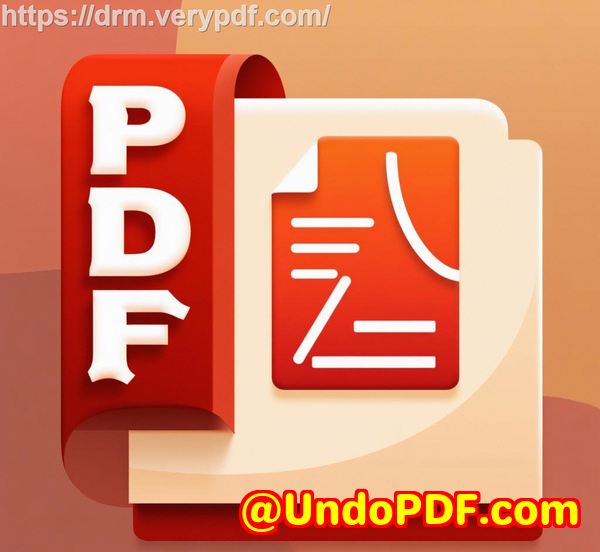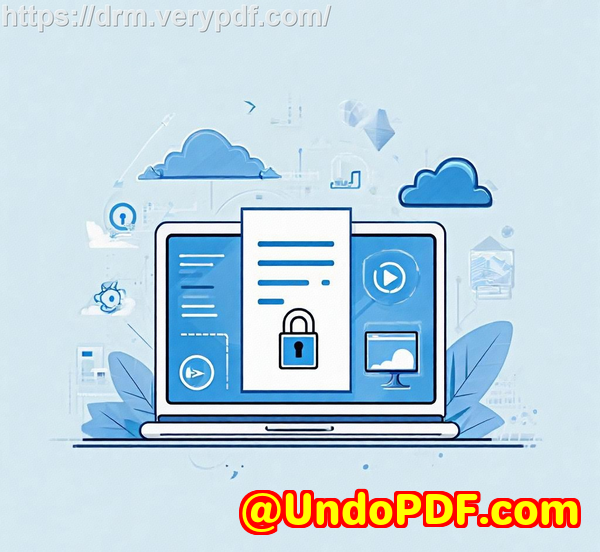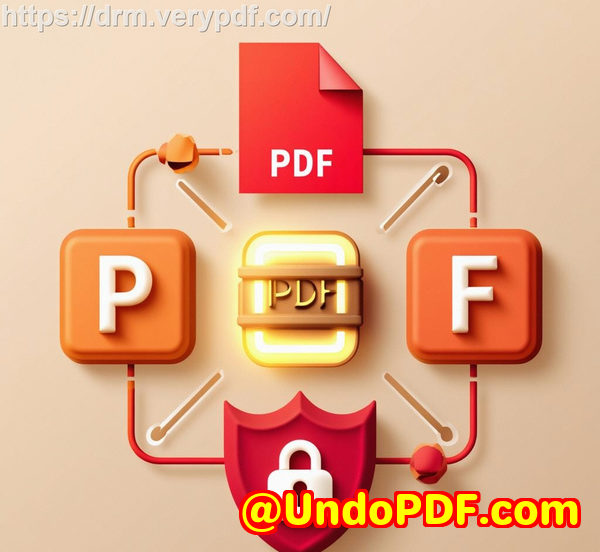How to Take Action When Students Are Sharing My PDF Files and Lock Down All Future Access Rights
How to Take Action When Students Are Sharing My PDF Files and Lock Down All Future Access Rights
Take control of your PDFs and stop students from sharing them with VeryPDF DRM Protector secure, trackable, and expiry-controlled PDF sharing.

Every semester, I’ve faced the same headache: students sharing my course PDFs outside the classroom.
I remember opening a student forum one morning, coffee in hand, only to find my lecture notes circulating freely online.
All the hours I’d spent compiling content, annotating examples, and creating guidesgone, shared with people who hadn’t even enrolled in my course.
It was frustrating, stressful, and, honestly, felt like losing control over my own work.
I needed a solution that didn’t rely on trust or complicated setupssomething that could secure my PDFs, track who viewed them, and instantly revoke access if needed.
That’s when I discovered VeryPDF DRM Protector.
Why VeryPDF DRM Protector is a Game-Changer for Educators
I started exploring digital rights management tools, but most options were clunky or ineffective.
Some allowed password protection, but students could still share the files along with the password.
Others required complex software installations, which was a nightmare for my students using different devices.
VeryPDF DRM Protector changed all of that.
It’s web-based, mobile-friendly, and designed for educators, publishers, and anyone sharing sensitive PDFs.
With just a drag-and-drop, I could upload my lecture notes, set view limits, add expiration dates, and send out secure links.
No more worrying if a student forwarded a file to someone outside the class.
Key Features That Made My Life Easier
1. Control Access with Precision
I could limit views, set expiration dates, and password-protect files in a few clicks.
For example, I uploaded my latest assignment PDF and restricted it to three views per student.
I also set it to expire two weeks after release.
This meant that even if someone tried to save or share it, the file would become inaccessible automatically.
Pro tip: Combine view limits with expiration dates to create layered security.
It’s a simple way to ensure documents aren’t endlessly shared.
2. Dynamic Watermarks for Accountability
One feature that blew me away was dynamic watermarking.
Every PDF could be automatically stamped with the student’s name, email, date, and time whenever they opened or printed it.
I had an instance where a PDF ended up on a public forum, but the watermark clearly traced it back to a student who had violated the rules.
This alone was a huge deterrent and saved me from unnecessary emails and follow-ups.
3. Revoke Access Instantly
Sometimes, I’d release an updated version of lecture notes, and the previous one had to be removed immediately.
VeryPDF DRM Protector allowed me to revoke access globally or for individual students in real time.
No more waiting for them to delete the file themselves.
It worked across devices, locations, and even offline USB distributions.
The level of control is unlike anything I’ve seen with conventional PDF security tools.
4. Tracking & Reporting Usage
I can now track who viewed or printed my PDFs, on which devices, and when.
It’s reassuring to know that every action is logged, making it easy to spot unusual activity.
For instance, one student tried accessing the files from a non-registered device, and I received an immediate alert.
This kind of insight is invaluable for anyone sharing intellectual property, whether you’re a teacher, consultant, or content creator.
5. Flexible Sharing Options
VeryPDF doesn’t just protect PDFs; it makes sharing effortless.
-
Drag and drop upload from PC, phone, Dropbox, or OneDrive.
-
Send email invites with automatic QR codes for quick access.
-
Mobile-friendly viewing without any app installations.
This was a game-changer for me because I didn’t have to instruct my students on complicated setups.
Everything worked seamlessly on their devices, reducing confusion and IT headaches.
Real-Life Use Cases for Educators
-
University professors: Secure lecture notes, exams, and research papers.
-
Online course creators: Protect course PDFs from being freely shared online.
-
Tutors: Control access to study guides and assignment solutions.
-
Educational publishers: Sell PDFs with secure access and track usage to prevent piracy.
For me, it meant I could confidently provide students with digital resources without worrying about them leaking or being used outside the classroom.
I finally felt like I was in control of my intellectual property.
Core Advantages of VeryPDF DRM Protector
-
Strong encryption: US government-grade encryption ensures documents can’t be bypassed.
-
Device and location locking: PDFs only work on authorised devices and locations.
-
Print control: Stop printing, limit prints, or watermark them.
-
Automatic expiry and revocation: Set end dates, view limits, or revoke access anytime.
-
Comprehensive tracking: Logs every view and print for accountability.
Compared to basic PDF password protection, VeryPDF provides a full suite of DRM controls that truly enforce your access policies.
Unlike cloud collaboration platforms, users cannot copy, edit, or redistribute your documents.
How I Implemented It in My Classes
-
Uploaded all lecture notes to VeryPDF DRM Protector.
-
Set individual view limits and expiry for each student.
-
Applied dynamic watermarks for accountability.
-
Sent email invitations with QR codes for easy access.
-
Monitored usage daily to ensure compliance.
Within a week, I noticed fewer complaints about missing materials and zero incidents of unauthorized sharing.
The peace of mind was priceless.
Conclusion: Why Every Educator Should Consider VeryPDF DRM Protector
If you’re tired of losing control over your PDF materials, VeryPDF DRM Protector is a solution that works.
It’s simple, flexible, and robust.
From controlling who can access your PDFs to tracking every action and revoking access instantly, it covers all bases.
I’d highly recommend this to anyone who deals with digital teaching materials or confidential documents.
It saves time, reduces stress, and ensures your work is respected.
Start your free trial now and take full control of your PDFs: https://drm.verypdf.com/
Custom Development Services by VeryPDF
VeryPDF provides tailored development solutions to meet unique needs.
Whether you require specialized PDF processing on Windows, Linux, or macOS, or need custom DRM solutions for educational content, VeryPDF can deliver.
Services include:
-
Python, PHP, C/C++, .NET, JavaScript, and HTML5 development
-
Windows Virtual Printer Drivers for PDF, EMF, and image output
-
Printer job capture and monitoring
-
API hooks for file access monitoring
-
OCR, table recognition, barcode recognition, and image conversion tools
-
Cloud-based PDF viewing, conversion, and digital signature solutions
-
Advanced PDF security, DRM, and rights management
For bespoke solutions, contact VeryPDF through their support center: https://support.verypdf.com/
FAQ
1. Can I prevent students from sharing my PDFs outside my course?
Yes, VeryPDF DRM Protector allows you to lock PDFs to specific devices, set expiry dates, and revoke access anytime.
2. Are my PDFs viewable on mobile devices?
Absolutely. The platform is mobile-friendly, and QR codes make access simple without extra apps.
3. Can I track who opened or printed my documents?
Yes, you can monitor views, prints, and even the device and location of access.
4. Is it possible to revoke access after distribution?
Yes, you can instantly revoke access for all users or specific individuals.
5. Can I apply watermarks to discourage redistribution?
Yes, dynamic watermarks can include user name, email, date, and time for accountability.
Tags / Keywords
-
Secure PDF sharing
-
DRM PDF protection
-
Protect lecture notes
-
Prevent PDF piracy
-
Student PDF access control



